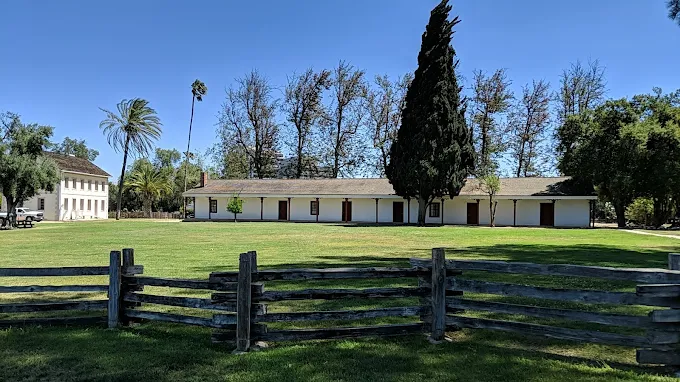
Nestled in the heart of the San Fernando Valley, Los Encinos State Historic Park in Encino serves as a pivotal repository of California’s multifaceted history. The park, with its well-preserved De La Ossa Adobe, the reflective pond, and the remnants of a once-operational grist mill, offers a profound glimpse into the daily lives of its earliest inhabitants, including the Tongva people and later Spanish and Mexican settlers. This convergence of cultural narratives is not only encapsulated in the physical structures but also echoed in the variety of artifacts and interpretive exhibits. As one explores these relics, the question arises: how have these historical layers influenced the modern identity of California?
Discovering the Park’s Origins in Encino, CA
Los Encinos State Historic Park, established as a public area in 1949, preserves the rich tapestry of Native American and Spanish colonial history through its well-preserved structures and artifacts. Positioned in the San Fernando Valley, this park serves as a poignant reminder of California’s multifaceted heritage.
The area was originally inhabited by the Tongva people, known for their sophisticated societal structures and deep connection to the land.
By the 19th century, the site became part of Rancho Los Encinos, a pivotal location during the mission and rancho periods of California. This transition reflects the broader shifts in power, culture, and economy that shaped the early Californian landscape. The rancho system introduced by the Spanish, and later adopted by the Mexican settlers, played a crucial role in the development of agriculture and cattle ranching in the region.
The establishment of Los Encinos State Historic Park was driven by a commitment to safeguard and interpret these historical layers for future generations. The park not only stands as a repository of the past but also as a community space where individuals can connect with their shared history, fostering a sense of belonging and identity among visitors eager to understand the narratives that have shaped their environment.
Highlights of the Historic Site
Stepping into Los Encinos State Historic Park, visitors encounter the meticulously restored adobe and water-powered grist mill, which stand as testaments to the area’s historical significance and technological advancement during the rancho period. These structures not only provide a glimpse into the lives of those who lived here centuries ago but also serve as focal points for community connection and historical education today.
To further enhance your experience, consider these key highlights:
- The De La Ossa Adobe: Visit this 1849 adobe home, one of the oldest buildings in the San Fernando Valley. It offers an authentic look at Californio life in the 19th century, featuring period furnishings and artifacts that tell the story of the early Californian settlers.
- The Pond and Natural Spring: Explore the serene pond fed by a natural spring, which has been a vital water source since Native American times. This tranquil spot invites contemplation and offers a cooling respite on warm days.
- Historical Interpretive Exhibits: Engage with the educational displays that detail the park’s evolution from Native American lands to a Spanish rancho, through to its development into a state historic park. These exhibits provide context, enhancing visitors’ understanding and appreciation of the site’s rich past.
Each of these elements invites you to immerse yourself in the history and culture of Los Encinos, fostering a sense of connection and belonging to California’s diverse heritage.
In conclusion, Los Encinos State Historic Park in Encino serves as a vital custodian of the cultural and historical legacy of California, bridging past and present.
The park’s preservation efforts underscore the adage, ‘Those who cannot remember the past are condemned to repeat it.’
By safeguarding and interpreting the stories of the Tongva people, Spanish and Mexican settlers, the park ensures these narratives continue to enlighten and educate future generations, fostering a deeper appreciation of the diverse heritage that shapes California today.